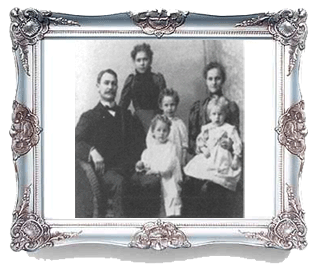
The Elkington Family and their Industrial Background George Richards Elkington, who was primarily responsible for having the church built, was born on October 17th 1801, at St. Paul’s Square, Birmingham. Both his father’s and mother’s (nee Richards) families were involved in several kinds of manufacturing. Elkington spent his whole life in Birmingham, becoming a Borough magistrate in 1956. He Married Mary Auster Balleny and they had five sons and one daughter. Elkington and his cousin Henry Elkington, were well acquainted with various industrial processes which helped them to pioneer electro-plating, usually referred to as `Elkington Plate`. However, they were unable to maximize their products commercially due to their inability to finance further expensive machinery. Fortunately, Josiah Mason, a wealthy well-established Birmingham manufacturer offered to invest money to expand their works. Thereafter, the world-wide demand for Elkington Plate encouraged them to form a hugely profitable partnership. By the late 1840s, the partners decided to invest some of their wealth in the copper smelting trade and in 1849 they established the Pembrey Copperworks Company (adopting the Pembrey parish name) alongside the harbour in Burry Port. In 1855, the Company built three separate schools, an infant, Girls and Boys on the same campus near their works. The Company also built accommodation for the schools´ staff near the schools.  The original office building of Elkington & Co 1849-1884
ELKINGTON & CO LIMITED 1884 PEMBREY COPPER WORKS Alexander and Henry Parkes, the noted
industrial chemists and inventors of Birmingham at a meeting in 1848
recommended Burry Port as the most suitable place for the Elkington & Mason’s
Copperworks. Many years after the first firing of the smelter furnace, all
the copper ore was shipped to Burry Port Harbour in small sailing ships from
copper mines in Devon, Cornwall, North Wales and other areas in Britain.
However, as demand increased for ore Importers were compelled to look for
sources of ore outside Britain; these included Portugal, Spain, South Africa,
Australia, America, Cuba and Chile, the latter country (Chile) eventually became
the main supplier to the local works. Captain William Edmunds who had been
very much concerned with the copper trade from Chile built “Chili Villa” in
Stepney Road. He and his wife Ester lived in Chile for 25 years, their daughter
Winifred was born there. Although Mason and Elkington had
dissolved their partnership in 1856, their former electro-plating works in
Birmingham and their Pembrey Copperworks still carried on the dual name. In 1884, the ownership and contracts of Mason & Elkington´s Pembrey Copper Works were dealt with at the Elkington & Co`s new London Head Quarter Offices, but Gerard Bartleet Elkington carried on as Manager in Burry Port. He was in-charge of the works from 1876 to 1903, in which year he retired and left the Parish, and became one of the Trustees and Executors of James Balleney Elkington’s Trust made for his
2nd
wife Emily Elkington and two sons George Meredith Elkington and James Llewellyn Meredith Elkington. See copy of the Will. The Elkington’s owned several boats at
various times: all were moored in Burry Port and were registered in the Port of
LLanelly names of two of the boats were “Pilot” and “Hero” Years later, larger ships operating from
abroad were also used to freight the ore were off loaded in London then
transported to Burry Port Entry from a local newspaper of 1877
Quote “The RED BREAST, Grimsby, will sail this day
(Thursday.
6th July) for Montreal, loaded with Messsrs Mason& Elkington’s
anthracite stone coal. On 2nd February, 1903 the Elkington’s business in the Pembrey Copper Works only, sold some of their Woodbrook
Terrace houses, one of the two directors who signed on behalf of the Company was
Arthur Neville Chamberlain, who became the British Prime Minister from 1837 to
1940.
During the last few years of the 19th
century and the early years of the 20th century a number of
technical, industrial, maritime, financial, manufacturing and trading changes
were threatening the very survival of all the copper-smelting works, including
the Prembrey Copperworks. As larger trading ships were used and Burry Port
could not accommodate them, London became the discharging port for Pembrey
Coperworks.
|





